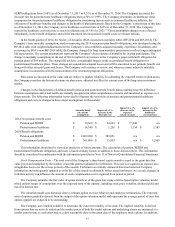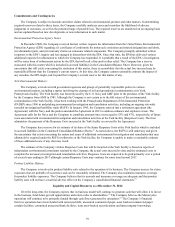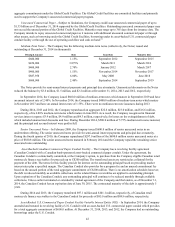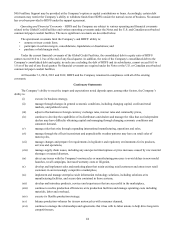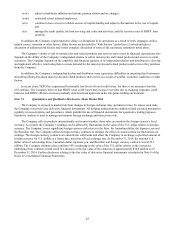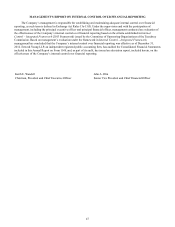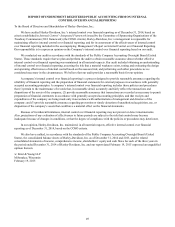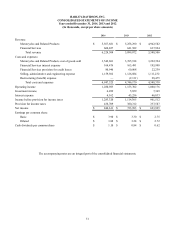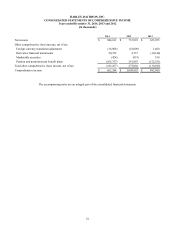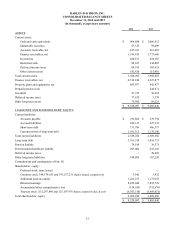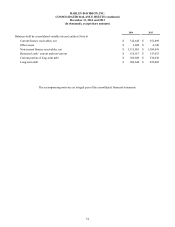Harley Davidson 2014 Annual Report Download - page 45
Download and view the complete annual report
Please find page 45 of the 2014 Harley Davidson annual report below. You can navigate through the pages in the report by either clicking on the pages listed below, or by using the keyword search tool below to find specific information within the annual report.
(xvii) adjust to healthcare inflation and reform, pension reform and tax changes,
(xviii) retain and attract talented employees,
(xix) continue to have access to reliable sources of capital funding and adjust to fluctuations in the cost of capital,
and
(xx) manage the credit quality, the loan servicing and collection activities, and the recovery rates of HDFS’ loan
portfolio.
In addition, the Company could experience delays or disruptions in its operations as a result of work stoppages, strikes,
natural causes, terrorism or other factors. Other factors are described in “Risk Factors” under Item€1A which includes a
discussion of additional risk factors and a more complete discussion of some of the cautionary statements noted above.
The Company’s ability to sell its motorcycles and related products and services and to meet its financial expectations also
depends on the ability of the Company’s independent dealers to sell its motorcycles and related products and services to retail
customers. The Company depends on the capability and financial capacity of its independent dealers and distributors to develop
and implement effective retail sales plans to create demand for the motorcycles and related products and services they purchase
from the Company.
In addition, the Company’s independent dealers and distributors may experience difficulties in operating their businesses
and selling Harley-Davidson motorcycles and related products and services as a result of weather, economic conditions or other
factors.
In recent years, HDFS has experienced historically low levels of retail credit losses, but there is no assurance that this
will continue. The Company believes that HDFS' retail credit losses may increase over time due to changing consumer credit
behavior and HDFS' efforts to increase prudently structured loan approvals in the sub-prime lending environment.
45
Item 7A. Quantitative and Qualitative Disclosures About Market Risk
The Company is exposed to market risk from changes in foreign exchange rates and interest rates. To reduce such risks,
the Company selectively uses derivative financial instruments. All hedging transactions are authorized and executed pursuant to
regularly reviewed policies and procedures, which prohibit the use of financial instruments for speculative trading purposes.
Sensitivity analysis is used to manage and monitor foreign exchange and interest rate risk.
The Company sells its products internationally and in most markets those sales are made in the foreign country’s local
currency. As a result, the Company’s earnings can be affected by fluctuations in the value of the U.S. dollar relative to foreign
currency. The Company’s most significant foreign currency risk relates to the Euro, the Australian dollar, the Japanese yen and
the Brazilian real. The Company utilizes foreign currency contracts to mitigate the effect of certain currencies' fluctuations on
earnings. The foreign currency contracts are entered into with banks and allow the Company to exchange a specified amount of
foreign currency for U.S. dollars at a future date, based on a fixed exchange rate. At December€31, 2014, the notional U.S.
dollar value of outstanding Euro, Australian dollar, Japanese yen, and Brazilian real foreign currency contracts was $339.1
million. The Company estimates that a uniform 10% weakening in the value of the U.S. dollar relative to the currencies
underlying these contracts would result in a decrease in the fair value of the contracts of approximately $30.8 million as of
December€31, 2014. Further disclosure relating to the fair value of derivative financial instruments is included in Note 8 of the
Notes to Consolidated Financial Statements.




